By Vanessa Grossl, Policy Analyst, CSG Headquarters
The numbers of workers who participate in “alternative” work environments has risen substantially over the past decade. Millions of Americans are now considered “gig economy” workers, often utilizing technology to facilitate services or micro-tasks delivered on demand. Most of these workers file taxes using 1099 forms, making them traditionally ineligible for unemployment insurance programs in their states. However, under the federal Coronavirus Aid, Relief, and Economic Security (CARES) Act, unemployment insurance benefits cover gig economy workers, and self-employed workers have also been deemed eligible to apply for business aid through Paycheck Protection Program loans from the Small Business Administration (SBA), which has faced criticism for an uneven distribution of the first $248 billion of coronavirus-relief loans.
- Due to technical difficulties and logistics with state unemployment insurance systems, workers worry about when or if they will receive their payments.
- Last week, the Paycheck Protection Program loan funds were maxed-out, with more allocations expected from Congress.
- Is this the beginning of a change in the evolution of future worker benefits?
What is the Gig Economy and How Big is it?
There is still contention surrounding how the “gig economy” is actually defined, which has caused difficulty when attempting to capture an accurate number of gig economy jobs. The Federal Reserve’s 2017 Survey of Household Economics and Decision-making found that 31% of adults engaged in some form of gig work in the previous month. The study included work conducted offline and potentially unrecorded, such as babysitting, grass cutting or house cleaning. More recent data shows that up to 36% of U.S. workers, or approximately 57 million people, are participating in the gig economy in some way, with 29% engaging in gig economy work as their primary job. Some of the ambiguity with defining the gig economy, measuring the data and determining who counts in this category has gotten in the way of freelancers who have sought access to the benefits included with the CARES Act. State systems for filing claims for unemployment insurance are having to be retooled in order to handle applications for self-employed workers. Computer systems at the banks and SBA who are facilitating the Paycheck Protection Program have also been overwhelmed. Loan-seekers have experienced long wait times and have faced ineligibility due to not having bank accounts or credit cards for their businesses.
Gig Economy-Related State Impacts
States have lingering questions about worker eligibility under the CARES Act that were either unclear or lacked detail when it was enacted. State unemployment officials in California, Illinois, Washington and Colorado are not ready to begin processing applications for workers participating in the gig economy. States have been overwhelmed with processing unprecedented numbers of jobless claims from traditional workers — nearly 17 million workers nationwide or about 11% of the labor force — over the past 3 weeks. As a result, many states are asking independent contractors to wait until later in April to apply, as they need more time to staff and program these complex systems that can process benefits for these alternative workers. States continue to remind gig economy workers that benefits will be retroactive and will not be lost during this waiting period, but major delays could threaten the livelihoods of some cash-strapped nontraditional workers.
Additionally, some advocates fear that certain nuances in the U.S. Department of Labor’s guidance may cause interpretations by some states that classify certain workers as ineligible for benefits because their places of employment have not closed. For example, ride-share drivers can still drive their vehicles — in other words, visit their places of employment — because not all governors have ordered drivers off the roads. In some cases, states are asking that gig economy workers simply not apply for unemployment benefits at this time as the governments await key guidance from the department of labor. Mississippi, North Carolina and Utah estimate they will be able to begin accepting applications from freelancers next week, cautioning that applicants be prepared for processing times of up to 30 days before payments may be received.
Massachusetts expects to launch its program at the end of April, and New York has put out a step-by-step guide to help gig workers [BH1] apply for benefits in an effort to address the difficulties and streamline the process in reporting their nontraditional work.
Role of Companies
With new state employment programs being retooled to process claims from gig economy workers, some argue that the gig employers have an obligation to help navigate the presenting challenges by making information, such as wage data, more accessible and/or potentially paying taxes to help cover workers who become unemployed. This could help improve the expediency of processing claims.
For years, many of these companies that employ a gig workforce have argued that these workers are not employees, and they have worked hard to prevent having to alter their business models, despite the newly enacted AB5 law in California as well as pending legislation in New York and New Jersey to classify more workers as employees rather than independent contractors, among other things.
Future of Benefits and Worker Financial Security
Since federal lawmakers approved this historic expansion to unemployment benefits on March 27, boosting weekly checks by $600, adding 13 weeks of benefits and creating a new pandemic unemployment assistance program to cover certain people affected by the outbreak, many are wondering whether these reliefs will have lasting impacts on the future of benefits post-pandemic. The Aspen Institute has released a resource guide for policymakers on designing portable benefits. States including Washington and New Jersey are already considering Portable and Expanded Benefits structures for their evolving workforces. The year ahead will bring scheduled increases in minimum wages for 24 states, and laws aimed at protecting workers from noncompetition agreements imposed by employers advanced in a handful of states this year. Additionally, a number of states are expanding overtime salary thresholds. More states could explore creating portable benefits funds so workers with multiple employers have access to retirement, paid time off and other benefits to meet the needs of the future of work.

